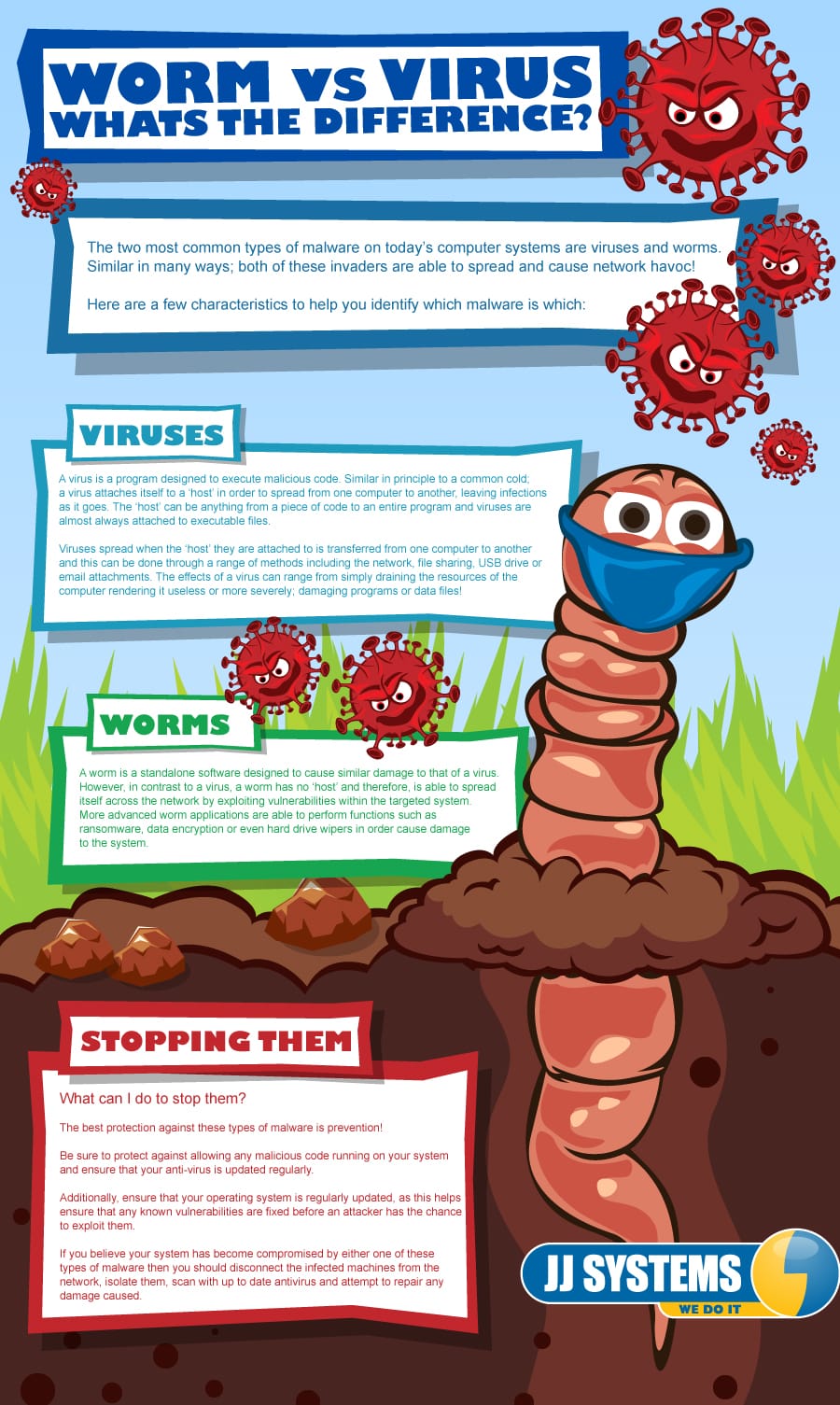Viruses vs Worms: What’s the difference?
Wednesday 22/04/2020
The two most common types of malware on today’s computer systems are viruses and worms.
Similar in many ways; both of these invaders are able to spread and cause network havoc! Here are a few characteristics to help you identify which malware is which:
Viruses
A virus is a program designed to execute malicious code. Similar in principle to a common cold; a virus attaches itself to a ‘host’ in order to spread from one computer to another, leaving infections as it goes. The ‘host’ can be anything from a piece of code to an entire program and viruses are almost always attached to executable files.
Viruses spread when the ‘host’ they are attached to is transferred from one computer to another and this can be done through a range of methods including the network, file sharing, USB drive or email attachments.
The effects of a virus can range from simply draining the resources of the computer rendering it useless or more severely; damaging programs or data files!
Worms
A worm is a standalone software designed to cause similar damage to that of a virus. However, in contrast to a virus, a worm has no ‘host’ and therefore, is able to spread itself across the network by exploiting vulnerabilities within the targeted system.
More advanced worm applications are able to perform functions such as ransomware, data encryption or even hard drive wipers in order cause damage to the system.
What can I do to stop them?
The best protection against these types of malware is prevention!
Be sure to protect against allowing any malicious code running on your system and ensure that your anti-virus is updated regularly.
Additionally, ensure that your operating system is regularly updated, as this helps ensure that any known vulnerabilities are fixed before an attacker has the chance to exploit them.
If you believe your system has become compromised by either one of these types of malware then you should disconnect the infected machines from the network, isolate them, scan with up to date antivirus and attempt to repair any damage caused.












